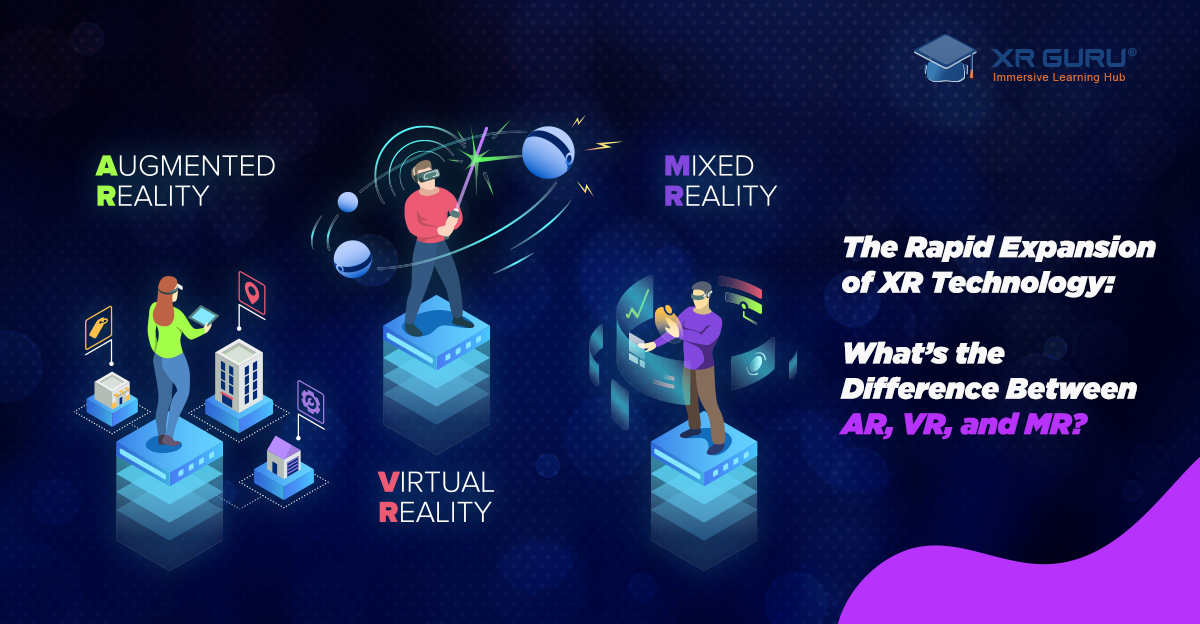Guide on Getting Started with VR in Your Classroom
 Virtual Reality (VR) is not a fancy piece of tech you only see in movies anymore. In recent years, VR came into prominence by entering the entertainment and gaming industry to enhance user experience. However, VR has gradually left its mark in other fields ranging from Retail to Education. According to recent statistics, the global VR market is projected to increase from less than $5 billion USD in 2021 to more than $12 billion USD by 2024. Considering these stats, it is safe to say that the trend of adopting VR tech in all industries is increasing, and in all likelihood, VR is set to be a part of our day-to-day lives.
Virtual Reality (VR) is not a fancy piece of tech you only see in movies anymore. In recent years, VR came into prominence by entering the entertainment and gaming industry to enhance user experience. However, VR has gradually left its mark in other fields ranging from Retail to Education. According to recent statistics, the global VR market is projected to increase from less than $5 billion USD in 2021 to more than $12 billion USD by 2024. Considering these stats, it is safe to say that the trend of adopting VR tech in all industries is increasing, and in all likelihood, VR is set to be a part of our day-to-day lives.
Obviously, some industries benefit more from VR than others, and education is one of them. Gen-Z is exposed to more advanced technologies and are becoming tech-savvy by the day, so they would love to see technologies like VR take over traditional methods of learning.
Curious about using VR in the classroom? Here is a guide on how you can start implementing Virtual Reality in the classroom.
What Do I Need to Get Started with VR?
When it comes to VR in the classroom, there are a lot of things to consider: the equipment required, lesson plans, applications, and more. Depending on your needs and budget, develop a plan. Once you have all the elements ready, it is easy to set up a VR classroom. However, handling new technology is not easy for all teachers. Train your teachers beforehand to troubleshoot if anything goes sideways so that there is no room for student distraction during the lesson.
What are the Tools Required?
You will need some basic equipment to build a VR-powered classroom.
1. VR Headsets
2. Wi-Fi Access
3. Safety Locker
1. VR Headsets
A plethora of VR headsets are available in the market- Oculus Quest, Oculus Quest 2, Pico, and HTC Vive are some of the best VR headsets for education. It is ideal for everyone in the classroom to have a separate VR headset to avoid wasting time on classroom management. The price per headset ranges from $250 to $800.
Some schools choose to purchase a set number of VR headsets per classroom so students can take turns based on the lesson or topic.
2. Wi-Fi Access
Most schools have their own policies and procedures for permitting new devices to connect to the wi-fi. Connecting the VR headset to Wi-Fi is a crucial step in implementing VR in education. Check with your school IT department to make sure you understand what is needed to access the Wi-Fi.
3. Safety Locker
After investing in all these gadgets, you would not want to lose them, right? So, get a safety locker to ensure that you have a secure space to store all this stuff. This could be a stand-alone unit or an existing built-in cabinet or closet.
What Are the VR Apps You Can Use in the Classroom?
Now that you have all the things set up, let’s get to the exciting part. There are a variety of VR apps you can use in the classroom.
Arts & Culture:
Imagine being on NASA's iconic Apollo 11 mission or enjoying the breathtaking view of Roman architecture. Many apps are available that provide a package of experiences for you to view virtual field trips. There is something truly magnificent to explore on every subject.
YouTube VR:
YouTube VR enables you to watch videos in 360 degrees, putting you at the heart of the action. You can find informative videos on different subjects such as history, science, nature, etc.
It also allows you to 'tour' different parts of the world. Imagine strolling through the gorgeous villages in Iceland! That’ll be a view to remember forever, right?
XR Guru:
XR Guru is an immersive learning hub that offers VR learning by using curated content in multiple subjects. It empowers learners to visualize the content and helps them understand complex subjects with ease while improving their knowledge retention. With interactive quizzes, explanations, and environment, XR Guru is a one-stop solution to experience immersive learning.
Takeaway Thoughts
Incorporating powerful technologies like Virtual Reality in classrooms will transform education as we know it. In the near future, classrooms will become more advanced with technologies like VR improving student engagement to unprecedented levels. There are many reasons to join the VR learning revolution, and immersive VR classrooms will inspire Gen-Z learners to develop leading-edge solutions for a better future.
Do you want to implement VR in your classroom? Contact us today to learn more benefits of VR in education.
Get in touch with us for a free consultation on implementing virtual reality for classroom
Claim Your Free Consultation



Comments
Post a Comment